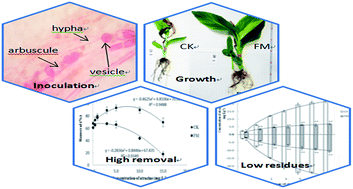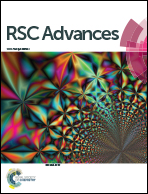The effect of Funnelliformis mosseae inoculation on the phytoremediation of atrazine by the aquatic plant Canna indica L. var. flava Roxb.
Abstract
Atrazine residues in water pose a serious threat to the environment and to human health. One method to reduce levels of atrazine in the environment is phytoremediation, a potential technology for in situ remediation. However, as atrazine is a herbicide, it damages the growth of plants and weakens the effect of phytoremediation. In this work, a pot culture experiment was conducted to investigate the effect of Funnelliformis mosseae inoculation on the phytoremediation of atrazine by Canna indica L. var. flava Roxb. The results demonstrated that C. indica was found as a novel tolerant species, and that inoculation with F. mosseae can alleviate the physiological inhibition of atrazine in the growth of plants and promote photosynthesis. Furthermore, C. indica inoculated with F. mosseae exhibited a greater efficiency to remove atrazine and to lower atrazine residue concentrations than plants without inoculation. With inoculation of F. mosseae, the maximum removal rates increased from 68.064% to 95.670%, while the concentration with the highest removal rates changed from 1.489 mg L−1 to 7.363 mg L−1. Inoculation of F. mosseae contributed 2.2–52.0% to the removal rate. This study shows that C. indica inoculated with F. mosseae may ultimately serve as a viable phytoremediation solution for in situ remediation.


 Please wait while we load your content...
Please wait while we load your content...